Starship and Space Station Positions
Starships and starbases have multiple positions for officers and crew. This article gives several of the most common positions, listed by department. The word 'unit' is used as short-hand to refer to either a starship or space station. While there are similarities across all units, individual commanding officers have wide latitude in developing a command structure that best suits their particular unit, so individual differences are common.
Command Division
The Command Division is denoted by the color red, and includes the unit-level departments of Command, Flight Control, and Strategic Operations. Other more specialized departments also included within this category and listed later in this article include the Judge-Advocate General's Corps and Diplomatic Services, but are far less common.
Command Department
The Command Department includes both the senior-most officers of the unit, as well as administrative support personnel. On the largest units (such as starbases) there can be dozens of people in the command department, while on smaller units it may just be the senior officers and a yeoman or two. Smaller units also often combine command-related departments such as Strategic Operations, Intelligence or Diplomacy, if officers in those specialties are present.
Standard Command Positions
Commanding Officer
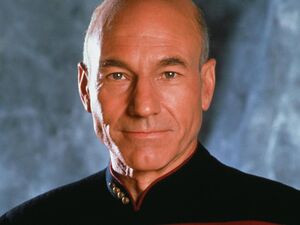
The Commanding Officer is the senior-most officer in charge of a unit. They have ultimate responsibility for the safety of their crew and for carrying out Starfleet's instructions. Aboard a starship, the commanding officer is always addressed as 'captain' even if they have a lower rank, but this custom does not apply to space stations. Starship commanding officers range in rank from lieutenant commander (for the smallest frigates and escorts) to fleet captain (for very senior captains aboard the largest ships), while for stations some of the smallest outposts (such as subspace relay stations) might be commanded by a lieutenant junior grade ranging to a full admiral commanding Starfleet's most important fleet yards.
Starships are rarely commanded directly by flag officers more senior than commodores. For the flagships of more senior officers, it is very common for the ship to have its own captain, who handles the day-to-day running of the ship. Historically, this officer would be called a flag captain, but the use of this term varies based on officers' preferences. Typically, a flag captain is relatively junior in seniority, given that they are closely supervised by their flag officer.
The captain of a starship has significant powers deriving from the difficulty of real-time contact with Starfleet, including the power to negotiate treaties and trade agreements when out of touch with Command. They also have authority over lesser vessels (such as tankers, freighters, passenger ships, etc.) during emergency situations. Similarly, commanding officers of starbases are often the senior-most officer in their sector with corresponding authority over starships in that sector.
Executive Officer / First Officer

The Executive Officer of a unit is second-in-command, responsible for assisting the commanding officer in carrying out their duties and taking command in their absence. Some of the XO's primary responsibilities are determining the duty schedule, performing crew evaluations, and ensuring that proper training has occurred for everyone aboard the ship. They are the interface between the CO and the crew, often serving as disciplinarian, career counselor, and supervisor to everyone on the ship or station. On a starship, the XO typically leads all away missions. XO's can range in rank from lieutenant to captain depending on the size of the unit. Whether they are called the Executive Officer or First Officer comes down to the CO's preference.
First officers have important responsibilities in several emergency and contingency protocols, including needing to concur with the commanding officer's decision to self-destruct the ship or station in most circumstances, and needing to concur with the opinion of both the ship's counselor and the chief medical officer in circumstances where the commanding officer must be relieved of duty.
On larger commands, this role is most often separate, but on smaller vessels (and historically in Starfleet) it is often a dual-role for one of the department heads. In this case, they wear the color of the department that they also head.
Second Officer
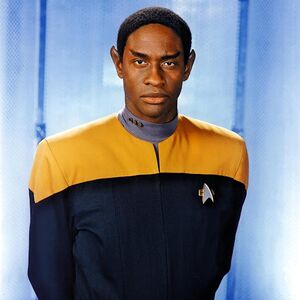
The Second Officer of a unit is third-in-command after the Executive Officer. This role is almost always a secondary duty for a department head, and generally does not carry any administrative burden on its own, but rather is a title for the officer designated to take over, should the CO and XO both be absent. Traditionally, the second officer also accompanies away teams. Second officers wear the color of the department they head. Often, but not always, they are the department head with the highest rank who is also bridge-qualified. For example, a second officer might hold the rank of lieutenant even if a the chief medical officer is a lieutenant commander, if the CMO were not bridge qualified. In the case of Lieutenant Commander Data, he was out-ranked by both Counselor Troi and Doctor Crusher, but was Second Officer because of his experience and capabilities as a bridge officer.
The very largest commands such as major starbases might have a dedicated second officer within the command department, but this is uncommon.
Yeoman

A yeoman is an administrative aid to a senior officer, or more generally a gopher and support staff member who helps with minor tasks (such as retrieving objects, sending messages, updating records, etc.). This position can be held by an enlisted member of Starfleet (i.e. a proper yeoman) or by a junior officer, such as an ensign or junior lieutenant wanting to learn more about command. Their usage is up to the officer they serve under, and ranges from all the way from handling clerical tasks to being a confidante and sounding board. The smallest units might not have any yeomen at all, but the largest might have dozens. Yeomen can also be found in other departments, handling similar tasks. Yeomen wear operations gold, rather than command red, to signify their support role.
Additional Command Positions
Records Officer
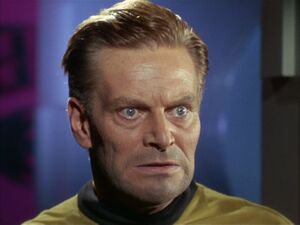
A unit's records officer is responsible for the accuracy of all logs, reports, and mission materials, and as such generally must have clearance nearly as high as the commanding officer's. They must ensure that everything that goes into the ship's log matches with other logs, and that the proper personnel and offices receive any reports filed. This was once a position found on all starships, but thanks to advancement in automation it is now often omitted. Due to the sensitivity of the information they deal with, this role is sometimes combined with that of the intelligence officer, should one be present.
Officer of the Watch
It is standard practice to have bridge-qualified department heads take the conn (i.e. command the bridge or operations center) when the captain, first officer, or second officer are otherwise occupied. Some starships have additional command department personnel who routinely stand watch on the bridge; most often this is a dedicated night-shift officer of the watch, but the largest ships might have up to six or seven officers between the rank of lieutenant junior grade and commander who are assigned to specific watches. This is more common aboard stations.
Command Master Chief
The Command Master Chief is the senior-most enlisted member of a unit, and might have additional responsibilities related to meeting the needs of the unit's enlisted population. This responsibility overlaps with the executive officer's responsibility for crew readiness and the counselor's responsibility to help address crew needs, and so it is rarely used in Starfleet, but some commanding officers employ it. As suggested by the name, this is generally a master chief petty officer, but lower enlisted grades could hold a modified title (Command Senior Chief, Command Chief, etc.) if necessary.
The Command Department In-Play
- This is both the most important and the smallest major department aboard any ship or base.
- Only very large ships or stations would have many people in this department beyond the CO and XO.
- The position 'Command Master Chief' is included here because of the extensive history it has in Star Trek RPGs, but given established screen canon, it is both redundant and indicative of a military hierarchy of enlisted v. officer that is much less important by the 24th century. The position of 'Chief of the Boat' used by some organizations is incorrect, if the intent is to parallel the modern US Navy, as that term is only applicable to submarines, given that any starship would have a much larger complement than such a vessel. Command Master Chief, Command Senior Chief, or Command Chief would be the appropriate title, if one insists on using it in this genre.
Flight Control Department
The Flight Control department combines the duties of piloting a starship, navigation, and/or handling docking procedures, as is appropriate to a particular unit. Large starships with shuttle bays will have all three of these duties represented, while space stations will only have to deal with docking procedures. This department is considered adjacent to command, and many officers move from this department into command just by virtue of their inherently greater experience with bridge operations than those in other departments. The vast majorities of roles in this department are positions that can only be filled by officers.
Standard Flight Control Positions
Chief Flight Control Officer

The Chief Flight Control Officer is responsible for the safe navigation and piloting of a starship, and/or coordinating the flight paths and docking needs of other vessels in the vicinity of a station or starship. The CFCO is a department head and generally has the helm personally for at least one shift per day, being the senior-most pilot aboard. The CFCO is also responsible for working with the ship's computer, stellar cartography section, and/or navigation section to ensure that courses are plotted efficiently and safely.
Assistant Chief Flight Control Officer
The Assistant Chief Flight Control Officer is the second-most-senior pilot or flight controller in a particular unit. As assistant department head, they help their department head determine a duty roster in coordination with the unit's executive officer. Otherwise, they have the same responsibilities of other flight control officers to take the helm for a shift on the bridge each day.
Flight Control Officer
Flight Control Officers are those officers who have a regular shift on the bridge or in station operations handling flight control duties. They can also be assigned to pilot small craft as necessary.
Relief Flight Control Officer
Relief Flight Control Officers are the most junior members of the flight control department qualified to pilot the ship or handle docking duties on a station. They are on-call for a particular shift, usually waiting in a room adjacent to the bridge or station operations, where they can quickly take over for a more senior officer at their station, should that officer be called away for some reason. They may occasionally also be given the helm for an entire shift, such as the night shift, and this is considered a training role, where they can accumulate enough hours of flight time to be considered fully-qualified.
Shuttle Bay Manager
The Shuttle Bay Manager is responsible for operations within the shuttle bay, specializing in moving small craft for storage and refueling, operating the landing tractor beams, and other tasks related to getting shuttles and shuttle pods ready to fly. On most ships, maintenance tasks are performed by crew from the Engineering department and landing control itself is performed by an on-duty flight control officer, or by a dedicated Landing Signals Officer, while the SBM is responsible for things like moving shuttles within the bay, and coordinating refueling. On starships with multiple bays, there are multiple shuttle bay managers. This position might also be found within the Operations department rather than the Flight Control department, and in either case wears operations gold.
Additional Flight Control Positions
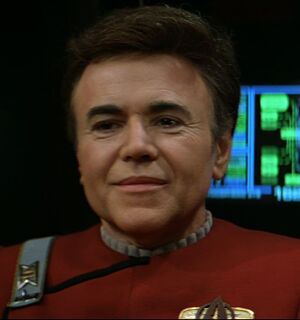
Navigation officers are found on many but not all starships, and are specialists in plotting courses for starships, especially in situations that require complex calculations and careful auditing of the main computer's suggestions. These officers must have training in astrophysics and stellar cartography, and generally report to one of those departments when not needed to plot a course. Collectively with any navigation specialists, they form the Navigation Section. On ships with more than one navigation officer, they may follow the structure of Chief, Assistant Chief, etc. They wear sciences blue.
Navigation specialists are enlisted navigators who assist navigation officers, with extensive training in the calculations necessary to navigate a starship.
Landing Signals Officer
Landing Signals Officers are specialist flight control officers who operate a starship or space station's hanger control rooms, guiding small craft in for a landing, either by remote control, tractor beam, or instructions over the comm. They are generally also assigned occasionally to operate the helm on the bridge, but their duty station during an alert status is in their shuttle bay's control room. There may be multiple LSOs on large ships or stations, generally one per shuttle bay.
Flight Deck Specialist
Flight deck specialists are enlisted specialists who assist the shuttle bay manager in getting small craft ready to fly, when it comes to positioning, refueling, and scheduling, not in terms of maintenance or piloting. On smaller ships, there may be no dedicated flight deck specialists, with enlisted members of the engineering or operations departments pulling double duty.
Small Craft Pilot / Fighter Pilot
Larger starships and most stations have dedicated small craft pilots, especially when there are more shuttles aboard than there are generalist flight control officers, which allows them all to be used at once. On some ships, they are assigned to a particular shuttle or runabout, but most of the time they're assigned to flight tasks based on mission needs and availability. Fighter pilots also fall into this category, on ships that carry them. Sometimes they are organized like a department of their own.
The navigator's mate is the senior enlisted member of any flight control department, either coming from the navigation specialist track or the flight deck specialist track. They assist the CFCO in developing a roster, and help mentor other enlisted members of their department. This role is not present on smaller units, especially in departments with small or no enlisted contingents.
Flight Control Department In-Play
- As of the 2360s by the latest, Starfleet combined the role of Helm and Navigation into Flight Control, likely due to advances in computer technology. FOs both plot the ship's course and pilot it. This means that any FO would need to be trained in astrophysics, stellar cartography, and starship operations, even with computer assistance.
- Some FOs would have regular watches, while others would be on-call to take over at any moment; the latter are what we've seen on the show itself, when an away team is called and seconds later both the FO and Ops officer have replacements who emerge from the turbolifts.
- Fighter piloting and starship piloting are not separate skills in Star Trek, because a fighter is a small starship. In the current military, helming a naval vessel and flying a fighter are very different tasks, and that is why they have wildly different tracks required of the officers doing these tasks. A ship might have a fighter squadron, but there's no reason that wouldn't be under the Chief Flight Control Officer, or that normal FOs couldn't also pilot fighters.
Strategic Operations Department
The Strategic Operations Department is found on most starbases but only on large starships with sector-wide command responsibilities. The purpose of this department is to help the officers in the Command Department remain aware of the position of other assets in relation to their unit, such as other starships in the sector, both allied and enemy, to help make strategic decisions. On starships, this department may only have one officer in it, but on major starbases, it could have a staff of dozens. This department is often found aboard flag officers' flagships, but reports to the flag officer and not to the ship's captain. On ships and bases without command responsibilities over other ships or bases, there would be little use for this department.
Standard Strategic Operations Positions
Chief Strategic Operations Officer

The Chief Strategic Operations Officer is the senior strategic operations officer, and is responsible for collating reports from within their unit's area of influence, making recommendations to the commanding officer or flag officer on how to best accomplish their mission with the strategic resources available to them. An example of this would be suggesting that a starship change position to accomplish a new mission objective, or recommending that one ship replace another on a mission because it is better suited or better positioned to handle it. Some departments may only have one Strategic Operations Officer, and in those cases this position is just called by that title. Generally, officers in this role must have spent some time in Operations, Tactical, or Command first, and so generally aren't under the rank of Lieutenant or Lieutenant Commander.
Assistant Chief Strategic Operations Officer
Assistant Chief Strategic Operations Officers assist their department head in their duties and in creating a duty roster, in conjunction with their unit's executive officer. As with the department head, they have typically had experience in Operations, Tactical, or Command, and usually are in the lieutenant ranks at least.
Strategic Operations Officer
On units with many strategic operations officers, there can be several in more junior ranks who are in training to head strategic operations of their own. Like with the more senior roles, they generally have some experience in other departments, but recent Ensigns who studied Interstellar Relations, Small Group Tactics, or Political Science are sometimes assigned to these larger departments.
Additional Strategic Operations Positions
Strategy Specialist
A Strategy Specialist is an enlisted specialist who has been trained to assist strategic operations officers in their duties. Generally speaking, their role is very similar to that of a yeoman, but the work inherently requires a higher clearance level. They are generally only found in very large strategic operations departments, as the skills required to be an effective strategist generally require an academy education.
Strategist's Mate
The Strategist's Mate is the senior enlisted specialist in the Strategic Operations departments, responsible for mentoring and training more junior specialists. This is a relatively rare position, given the same reasons that most units do not have any enlisted strategy specialists, but can be found when a strategic operations officer wants an enlisted perspective to help them formulate their advice to their commanding officer.
Strategic Operations In-Play
- This department almost got moved down to the 'Other Departments' section, but given that it is one of the departments referenced by name on screen, it's remained here, along with its history in the hobby.
- Most starships won't have a Strategic Operations Officer let alone a Strategic Operations Officer, unless they're flagships. Many starbases would have this position, though.
- If you're not hosting a flag officer or giving orders to other starships, you don't need a Strategic Operations Officer.
Operations Division
The Operations Division is denoted by the color gold, and includes a wide variety of departments related to the safe operation of Starfleet's many assets, and at the unit level departments in this division include Operations, Engineering, Security, Tactical, Intelligence, and Communications. On starships, Communications is often subsumed to Operations, and Security and Tactical are combined into a single department. Intelligence likewise might be represented by only a single officer, housed under the umbrella of command.
Operations Department
Operations is the department responsible both for managing resources for their unit and for the maintenance and operation of non-structural, non-propulsive systems, such as transporters, replicators, computers, communications arrays (on units without a communications department), holodecks, sensors, life support and environmental systems, and waste management. The largest units have multiple sections under this department for each of these areas, while the smallest units must share crew members between this department and engineering.
On some bases, especially smaller ones, this department replaces engineering entirely, the example being Deep Space 9.
Standard Operations Department Positions
Chief Operations Officer
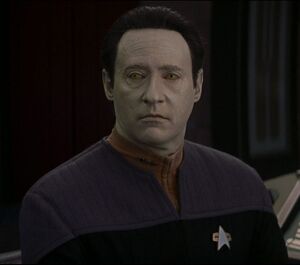
The Chief Operations Officer is the senior-most officer in the operations department, with responsibility over the allocation of resources (especially power) and the use of shipboard equipment (such as sensors and computers) between departments, so that mission priorities are completed effectively. Efficiency is this officer's primary concern. They serve as Operations Manager (which is a bridge role, not a formal position) at least one shift per day. This role is quite crucial and has a lot of power, but officers of all ranks can hold this role, notably Lieutenant Commander Data being Chief Operations Officer and Second Officer aboard the fifth Enterprise and Ensign Harry Kim being Chief Operations Officer and also the junior-most bridge officer aboard Voyager.
Assistant Chief Operations Officer
The Assistant Chief Operations Officer is second-in-command of the operations department, assisting their department head in their duties and coordinating with the executive officer to form duty rosters. Like the department head, they typically work on the bridge or station operations as operations manager, but also work with any section chiefs under them and other operations officers to perform other duties around the ship.
Operations Officer
Most units have a few generalist operations officers, who server as operations manager for a particular shift. On larger ships, this is a role generally reserved for officers at the rank of at least lieutenant junior grade (though as seen with Harry Kim above, this isn't a rule for smaller ships) as operations manager is a critical bridge role. Operations officers on smaller ships will also rotate through the responsibilities section chiefs would have on larger ships (waste management, logistics, communications, environmental control, etc.).
Relief Operations Officer
Relief Operations Officers are generally ensigns still in training to be entrusted with being operations managers for an entire shift. They are on-call for a particular shift, usually waiting in a room adjacent to the bridge or station operations, where they can quickly take over for a more senior officer at their station, should that officer be called away for some reason. They may occasionally also serve as operations manager for an entire shift, such as the night shift, and this is considered a training role, where they can accumulate enough hours of bridge time to be considered fully-qualified.
Transporter Chief

Transporter Chief is both a position and title, the title going to any Chief Petty Officer or above who runs a transporter room and the position going to the senior-most transporter chief for a unit. For example, Chief Miles O'Brien was both generally a transporter chief and the transporter chief aboard the Enterprise. They are experienced operations specialists who are highly specialized in their understanding of transporter systems, capable of trouble-shooting any problem and ensuring the safe transportation of personnel and cargo.
Additional Operations Department Positions
Not every ship will have an officer or chief running all of these sections, but they are representative of the types of sections which might be found under the Operations Department. On ships without a dedicated Communications Department, a Communications Section would work like the sections described here do.
Supply Operations Officer (Quartermaster)
Supply Operations Officers (informally known as quartermasters) are responsible for the fabrication, storage, and maintenance of hand-held equipment (such as tricorders) and other supplies, as well as for overseeing the ship's food and industrial replicators. They lead the Supply Section. Generally, they are junior officers, but a Chief Petty Officer could lead this section as Chief of Supply Operations.
Cargo Operations Officer
Cargo Operations Officers are responsible for the storage, safety, and transport of cargo aboard a starship or station, which includes making sure that containers are safely stowed, both in the right environmental conditions and secured in a way that they can't come loose and cause damage to the ship or station. They lead the Cargo Operations. Generally, they are junior officers, but a Chief Petty Officer could lead this section as Chief of Cargo Operations.
Environmental Operations Officer
Environmental Operations Officers are responsible for ensuring that the environmental control systems are maintained and operated within regulation. Generally speaking, these systems are highly redundant and difficult to damage because of how critical they are, so officers in this section serve as a safeguard to verify that automated processes are proceeding correctly. They would also be needed when any being with unusual environmental needs comes aboard. Generally, they are junior officers, but a Chief Petty Officer could lead this section as Chief of Environmental Operations.
Computer Operations Officer
Computer Operations Officers are responsible for the operation and routine maintenance of the ship's computer systems, especially when it comes to user access rights, data integrity, and software updates. Secondary functions include cybersecurity and portable hardware maintenance. Generally, they are junior officers, but a Chief Petty Officer could lead this section as Chief of Computer Operations.
Holography Operations Officer
Holography Operations Officers are responsible for the operation and maintenance of the holodecks, as well as hologrids in other locations on stations and starships that are so equipped. By 2399, this is an extremely important system, due to the omnipresence of emergency and assistive holoprograms, such as the EMH, LMH, ECH, etc. Generally, they are junior officers, but a Chief Petty Officer could lead this section as Chief of Holography Operations.
Waste Management Operations Officer
Waste Management Officers deal with processing waste and recycling it into the appropriate systems, which ranges from sanitation to breaking down unused equipment. It is not a popular position. Generally, they are junior officers, but a Chief Petty Officer could lead this section as Chief of Holography Operations.
Special Services Officer
Special Services Officers deal with coordinating the staffing of mess halls, lounges, bars, and other such spaces on their ship or station, especially when it comes to making sure that events like formal dinners and banquets are adequately staffed. Until the 2350s, this was its own division represented by the color cyan. Some waiters, bartenders, hairdressers, and other service staff are either civilians or holograms by 2399, but any of them who are part of Starfleet would report to this office. Generally, they are junior officers, but a Chief Petty Officer could lead this section as Chief of Special Services.
Operations Specialist (Yeoman)
Operations Specialists are members of Starfleet in the enlisted grades assigned to the Operations Department. There are many generalist Operations Specialists on any large command, as well as specialists within each section, who would take their position title from that section. (e.g. Computer Operations Specialist, Waste Management Operations Specialist, etc.). Generalists would normally be those personnel ranked as Crewmen, while specialists would have the rank of Petty Officer Third Class and above. Generalists are sometimes known in short-hand as yeomen, and are often who is called when things need to be moved from room to room, or other low-level logistics tasks.
Boatswain
Pronounced "bosun," the boatswain is the senior-most enlisted member of the operations department, who is responsible for the training of other enlisted members of the department. According to naval tradition, the boatswain should be present to great anyone arriving aboard the starship, but this is normally dispensed with and the duty of piping aboard dignitaries (with a whistle or other instrument) is left to a yeoman, or even to the ship's computer. Not all units, especially small units, have an individual with this title, but Operations Departments generally have a large number of enlisted members, so this position is the most common of all of the special titles for senior enlisted members.
Operations Department In-Play
- Engineering makes the ship move, but Operations makes it run. Resources are allocated, power is shunted, and transporters are run from here.
- Enlisted members of this department do a lot of the menial labor on the ship, such as moving cargo from one bay to another.
- The sections outlined in the above section would all need to be accounted for on any unit, but only medium-large ships and stations would have an officer in every role. Being an ops officer means pulling double-duties to keep the clock ticking smoothly.
